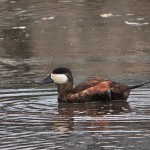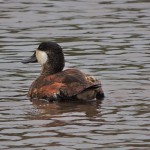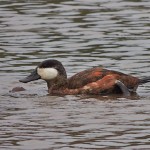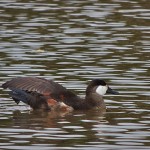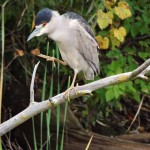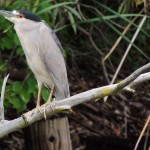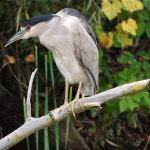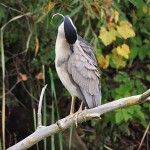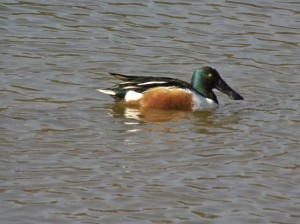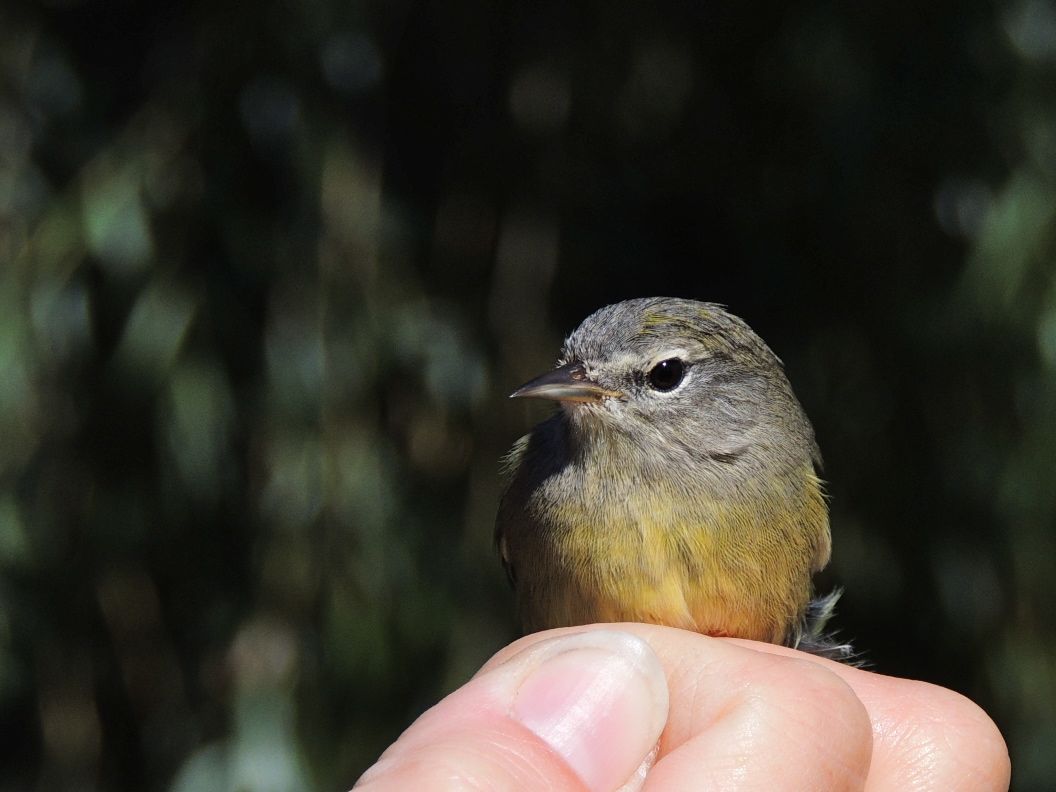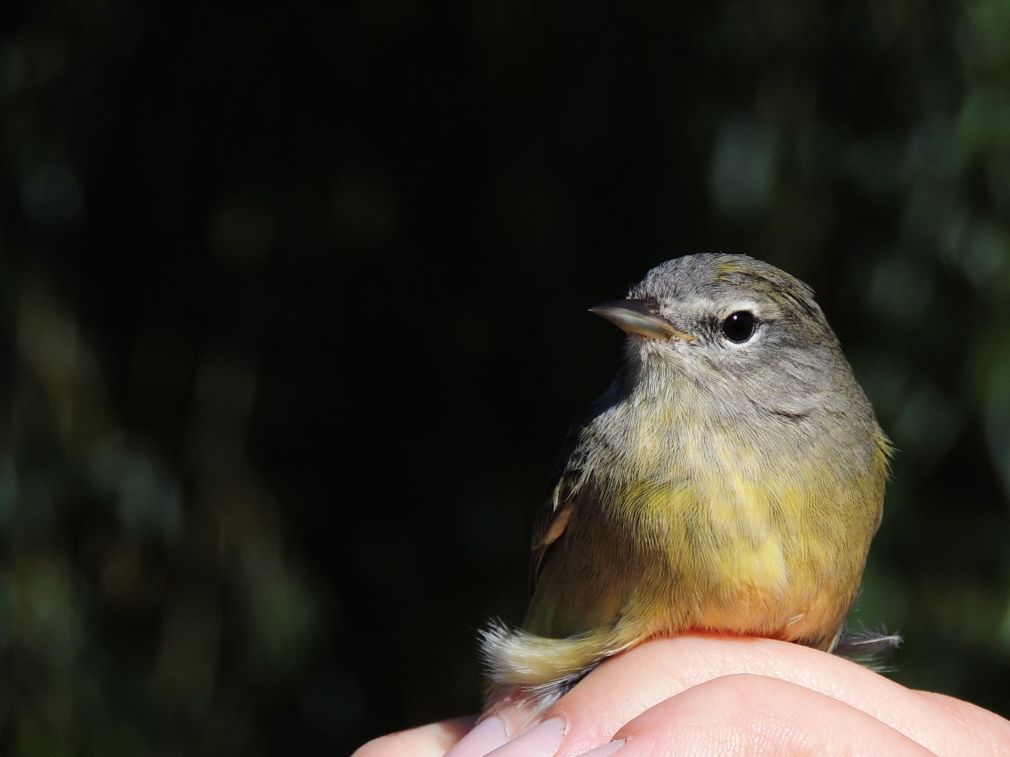Today’s Bird of the Day, an adult Black-crowned Night Heron, was perched on a branch not 50 feet from me, I think it was waiting for me to leave. It was mid-day, well past bed-time for a nocturnal, or at least crepuscular, hunter of frogs, small fish and the like. Night herons can be hard to find during the day, but if you check carefully in the inner branches of pond-side trees you’ll sometimes spot them hunkered down at rest and anywhere up to about 50 feet above water level.
I was standing on the edge of a wide and shallow pond not far from a large well-leaved willow tree, just the sort of place a night herons would choose for a nap, when it flew low over the water towards me from the other side of the pond. I think someone or something had flushed it from a secure perch forcing it over to ‘my’ willow, which it really saw as ‘its’ willow if only I’d move out of the way. So it alighted on a branch not far from me and after a short while moved in a little closer; all the better for getting loads of photos.
Two days ago I’d stopped at this little corner of the pond and found a Green Heron barely six inches above the water, motionless on a branch and holding a pose as if ready to strike and spear should a witless fish drift by. I was amazed at the heron’s apparent indifference to the presence of an intent group of bird photographers that had clustered around it. I didn’t have my camera so missed some priceless pictures, oh well, there’s more to birding than photography – to me anyway.
Leaving the Black-crowned Night Heron I made my way back to my car and noticed a couple of Ruddy Ducks sifting through gloopy pond-sludge. This particular pond is not too bad as ponds near large cities go, but what those ducks can possibly sift out of the sludge that’s edible is beyond me, and then to think that people like to shoot and eat the ducks afterwards leaves me quite baffled.
Lots of pictures here, click on any to enlarge it.
